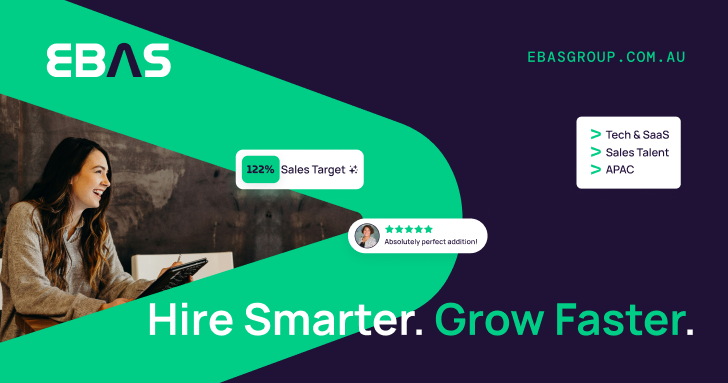Diversity and Inclusion Efforts: Moving Beyond the Checkbox in SaaS Hiring

Diversity and Inclusion Efforts: Moving Beyond the Checkbox in SaaS Hiring
Diversity and inclusion (D&I) have become key priorities for SaaS companies, and for good reason. Diverse teams are more innovative, adaptable, and better equipped to solve complex problems. But while many organizations claim to prioritize D&I, there’s growing skepticism about how these initiatives are implemented.
Critics argue that diversity efforts often feel like box-ticking exercises, focused on quotas rather than meaningful cultural change. Others worry that these initiatives might limit access to the “best” talent, especially in industries where specific skills or experience are in short supply.
So how can SaaS companies move beyond surface-level commitments to create diverse, inclusive teams that genuinely thrive? Let’s unpack the challenges, misconceptions, and actionable strategies for making D&I a core part of your hiring and company culture.

The Demand for Diversity in SaaS
In a globalized and fast-paced industry like SaaS, diversity is no longer just a “nice-to-have.” Companies with diverse teams consistently outperform their less-diverse peers, demonstrating higher revenue, stronger innovation, and better customer alignment.
Key drivers of the push for diversity include:
Market Representation: Diverse teams reflect the global customer base SaaS companies serve, leading to better understanding and engagement.
- Innovation: Teams with varied perspectives are more likely to approach problems creatively and find innovative solutions.
- Recruitment and Retention: Employees increasingly value inclusivity, and companies that prioritize D&I are more likely to attract and retain top talent.
Despite these benefits, achieving meaningful diversity remains a challenge, especially when companies rely on shallow metrics or poorly implemented policies.
Pro Tip #1: Define what diversity means for your organization. Go beyond demographics to include a diversity of thought, experiences, and perspectives.

The Challenges of D&I Initiatives
While the goals of diversity and inclusion efforts are well-intentioned, execution often falls short. Here are some of the common pitfalls:
1. Tokenism and Quotas When diversity becomes a numbers game, it can lead to tokenism. Hiring to meet quotas, rather than focusing on the value diverse individuals bring, risks alienating employees and undermining the credibility of D&I initiatives.
2. Surface-Level Commitments Many companies focus on diversity without addressing inclusion. True inclusion means creating a culture where all employees feel valued, heard, and empowered to contribute. Without this, even the most diverse teams can struggle to thrive.
3. Resistance to Change Introducing diversity initiatives often requires challenging entrenched systems, biases, and behaviors. Resistance from leadership or existing employees can hinder progress, making D&I feel like a separate project rather than an integral part of company culture.
4. Perceived Trade-Offs Some argue that prioritizing diversity might mean sacrificing the “best” talent, particularly in competitive fields like SaaS. This perspective ignores the fact that diverse candidates often bring unique skills and perspectives that can be just as valuable—if not more so—than traditional qualifications.
Pro Tip #2: Don’t stop at hiring diverse talent—invest in ongoing support, mentorship, and career development to ensure employees feel empowered and included.

Moving Beyond the Checkbox: Strategies for Meaningful D&I
To make diversity and inclusion a lasting part of your organization, you need to focus on cultural transformation rather than quick fixes. Here’s how:
1. Commit to Leadership Buy-In D&I efforts must start at the top. Leaders should champion diversity, model inclusive behavior, and allocate resources to ensure initiatives succeed. Without visible support from leadership, D&I efforts are unlikely to gain traction.
2. Expand Hiring Practices Broaden your approach to recruitment by:
-
Partnering with diverse organizations and networks: This expands your reach and helps you connect with underrepresented talent pools.
-
Revisiting job descriptions: Remove language that might deter diverse candidates, such as overly niche requirements or jargon.
-
Using blind screening techniques: This minimizes unconscious bias by focusing on skills and experience rather than demographic details.
3. Create Inclusive Onboarding and Training An inclusive onboarding process sets the tone for new hires, making them feel welcome and valued from day one. Ongoing training, such as unconscious bias workshops or cultural competency sessions, can help existing employees foster a more inclusive workplace.
4. Foster a Culture of Belonging Inclusion goes beyond hiring. It’s about creating an environment where all employees feel safe to share their perspectives, challenge ideas, and contribute fully. This can include:
-
Employee resource groups (ERGs) for underrepresented groups
-
Open forums for feedback and discussion
-
Recognition programs that celebrate diverse contributions
5. Measure and Adjust Track the impact of your D&I initiatives by gathering data on hiring, retention, and employee satisfaction. Use this data to refine your strategies and ensure continuous improvement.
Pro Tip #3: Use storytelling to celebrate diversity within your organization. Share employee experiences and successes to highlight the value of inclusivity.

Addressing the Misconceptions Around Diversity
Critics of diversity initiatives often cite concerns about meritocracy, arguing that prioritizing D&I might compromise the quality of hires. Here’s why that argument falls short:
-
Diversity and Excellence Are Not Mutually Exclusive: In fact, diverse teams often outperform homogenous ones because they bring varied perspectives and approaches to problem-solving.
-
Merit Is Broader Than It Seems: Traditional qualifications, such as specific degrees or career paths, don’t always capture the full spectrum of skills needed for success. By expanding hiring criteria, companies can uncover talent they might have otherwise overlooked.
-
Long-Term Benefits Outweigh Short-Term Challenges: While fostering diversity may require more effort initially, the long-term benefits—stronger teams, better innovation, and higher employee satisfaction—make it a worthwhile investment.
Pro Tip #4: Reframe diversity as a business advantage, not a compliance requirement. Highlight its role in driving innovation, customer alignment, and team success.

Final Thoughts: Building a Truly Inclusive Future
Diversity and inclusion are about more than ticking boxes—they’re about creating a workplace where everyone feels valued, empowered, and inspired to contribute their best. For SaaS companies, where innovation and adaptability are key, building diverse teams isn’t just ethical—it’s strategic.
By moving beyond surface-level commitments and embracing genuine cultural change, SaaS companies can unlock the full potential of their workforce, attract top talent, and drive meaningful progress.
It’s not always easy, but the payoff is clear: a stronger, more dynamic organization that’s ready to meet the challenges of tomorrow.

How Can EBAS Help?
EBAS specializes in helping SaaS companies implement meaningful diversity and inclusion strategies that go beyond surface-level commitments. Here’s how we can support your organization:
-
Expanding Your Talent Pipeline: We connect you with diverse talent pools through partnerships, networks, and targeted outreach, ensuring access to underrepresented candidates with the skills and potential to thrive in SaaS roles.
-
Unbiased Hiring Processes: Our team helps you design recruitment strategies that minimize unconscious bias, such as blind resume screening and inclusive job descriptions, ensuring that every candidate is evaluated fairly.
-
Tailored Onboarding and Development Programs: EBAS works with you to create onboarding and career development initiatives that support diverse hires, fostering a sense of belonging and enabling them to succeed within your organization.
-
Building Inclusive Cultures: Beyond hiring, we help companies cultivate workplace environments where all employees feel valued and empowered. This includes advising on employee resource groups (ERGs), mentorship programs, and inclusivity training.
-
Data-Driven Insights: EBAS provides tools and metrics to help you track the success of your diversity initiatives, offering actionable recommendations for continuous improvement and long-term impact.
At EBAS, we believe diversity is a driver of innovation and growth. By partnering with us, your company can build a truly inclusive workforce that attracts top talent, fosters collaboration and achieves sustainable success. Let’s talk about how we can help your D&I efforts create meaningful change.

Read Next
Learn the top habits for sales success. From active listening to time management, discover how to boost your sales skills and close more deals.
Discover key strategies for hiring tech sales professionals, from asking the right questions to fostering a relaxed interview atmosphere.
Explore the future of hiring with The EBAS Hiring Edge — expert insights on recruitment trends, talent strategies, and employer branding for 2024 and beyond.
Hire Top Sales Talent in 21 Days—On Track to Hit Your Targets in 90 Days
Discuss next steps to start recruiting.